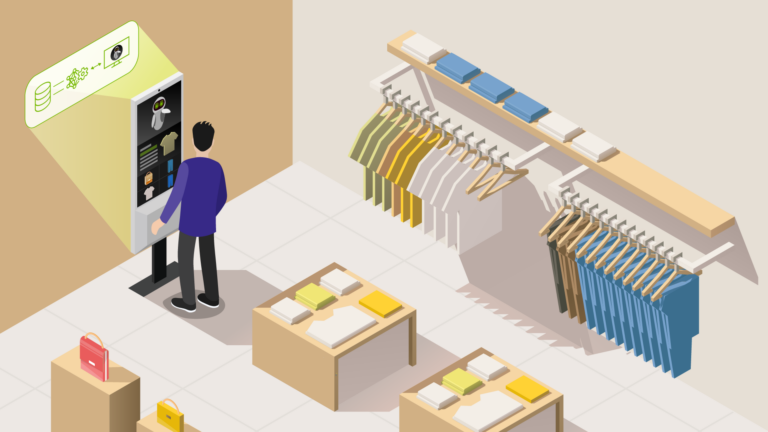 The open-source llama.cpp code base was originally released in 2023 as a lightweight but efficient framework for performing inference on Meta Llama models….
The open-source llama.cpp code base was originally released in 2023 as a lightweight but efficient framework for performing inference on Meta Llama models….
The open-source llama.cpp code base was originally released in 2023 as a lightweight but efficient framework for performing inference on Meta Llama models. Built on the GGML library released the previous year, llama.cpp quickly became attractive to many users and developers (particularly for use on personal workstations) due to its focus on C/C++ without the need for complex dependencies.
![]() Writer has released two new domain-specific AI models, Palmyra-Med 70B and Palmyra-Fin 70B, expanding the capabilities of NVIDIA NIM. These models bring…
Writer has released two new domain-specific AI models, Palmyra-Med 70B and Palmyra-Fin 70B, expanding the capabilities of NVIDIA NIM. These models bring…![]()
Writer has released two new domain-specific AI models, Palmyra-Med 70B and Palmyra-Fin 70B, expanding the capabilities of NVIDIA NIM. These models bring unparalleled accuracy to medical and financial generative AI applications—outperforming comparable models like GPT-4, Med-PaLM 2, and Claude 3.5 Sonnet. While general-purpose large language models (LLMs) have captured recent headlines…
 NVIDIA NIM, part of NVIDIA AI Enterprise, now supports tool-calling for models like Llama 3.1. It also integrates with LangChain to provide you with a…
NVIDIA NIM, part of NVIDIA AI Enterprise, now supports tool-calling for models like Llama 3.1. It also integrates with LangChain to provide you with a…
NVIDIA NIM, part of NVIDIA AI Enterprise, now supports tool-calling for models like Llama 3.1. It also integrates with LangChain to provide you with a production-ready solution for building agentic workflows. NIM microservices provide the best performance for open-source models such as Llama 3.1 and are available to test for free from NVIDIA API Catalog in LangChain applications.
 The previous post How to Accelerate Quantitative Finance with ISO C++ Standard Parallelism demonstrated how to write a Black-Scholes simulation using ISO C++…
The previous post How to Accelerate Quantitative Finance with ISO C++ Standard Parallelism demonstrated how to write a Black-Scholes simulation using ISO C++…
The previous post How to Accelerate Quantitative Finance with ISO C++ Standard Parallelism demonstrated how to write a Black-Scholes simulation using ISO C++ standard parallelism with the code found in the /NVIDIA/accelerated-quant-finance GitHub repo. This approach enables you to productively write code that is both concise and portable. Using solely standard C++, it’s possible to write an…
To prepare students for the future job market, NVIDIA has worked with top universities to develop a GPU-accelerated AI curriculum that’s now taught in more than 5,000 schools globally.
Techbio is a field combining data, technology and biology to enhance scientific processes — and AI has the potential to supercharge the biopharmaceutical industry further. In this episode of NVIDIA’s AI Podcast, host Noah Kravitz speaks with Chris Gibson, cofounder and CEO of Recursion, about how the company uses AI and machine learning to accelerate
Read Article
2024 Security Features
 California beaches are becoming safer with a new AI-powered shark detection system. Known as SharkEye, the technology identifies sharks near shorelines in real…
California beaches are becoming safer with a new AI-powered shark detection system. Known as SharkEye, the technology identifies sharks near shorelines in real…
California beaches are becoming safer with a new AI-powered shark detection system. Known as SharkEye, the technology identifies sharks near shorelines in real time and sends text alerts to public safety officials, lifeguards, and the community. This innovative AI-driven system, developed by the Benioff Ocean Science Laboratory (BOSL) at the University of California, Santa Barbara…
 As the demand for sophisticated AI capabilities escalates, VAST Data introduces the VAST Data Platform, now enhanced with NVIDIA BlueField DPUs. This innovation…
As the demand for sophisticated AI capabilities escalates, VAST Data introduces the VAST Data Platform, now enhanced with NVIDIA BlueField DPUs. This innovation…
As the demand for sophisticated AI capabilities escalates, VAST Data introduces the VAST Data Platform, now enhanced with NVIDIA BlueField DPUs. This innovation is tailored to meet the stringent demands of AI-driven data centers and optimize AI workloads and data management. This post presents how BlueField DPUs provide VAST with a significant boost in both performance and efficiency to…
